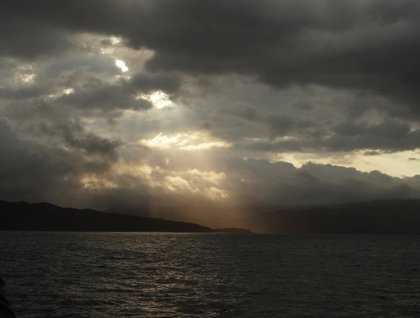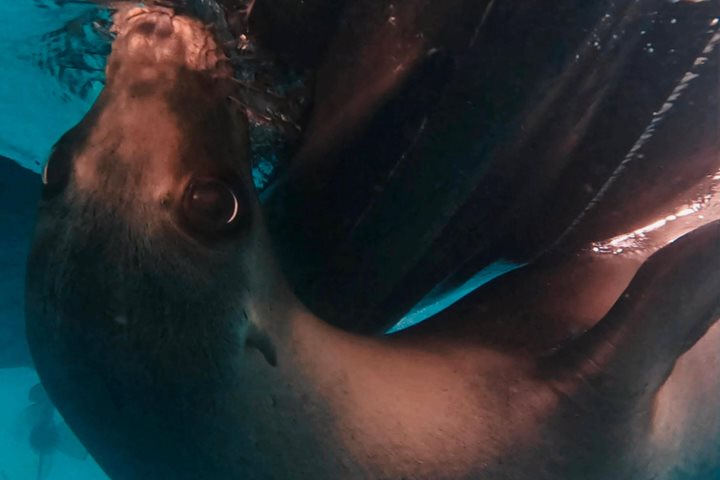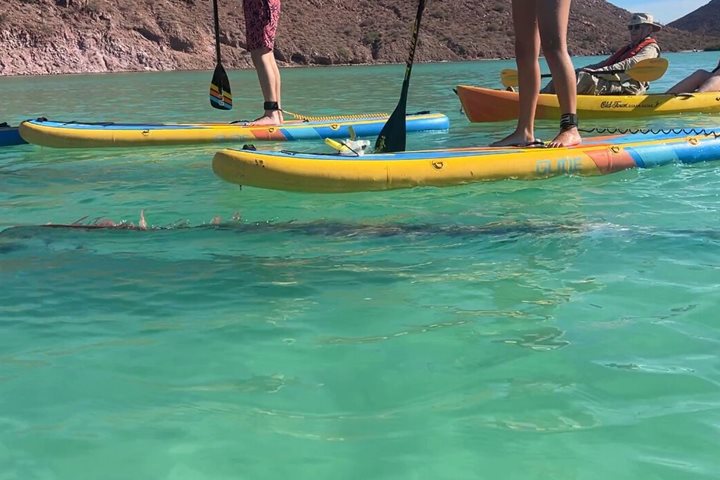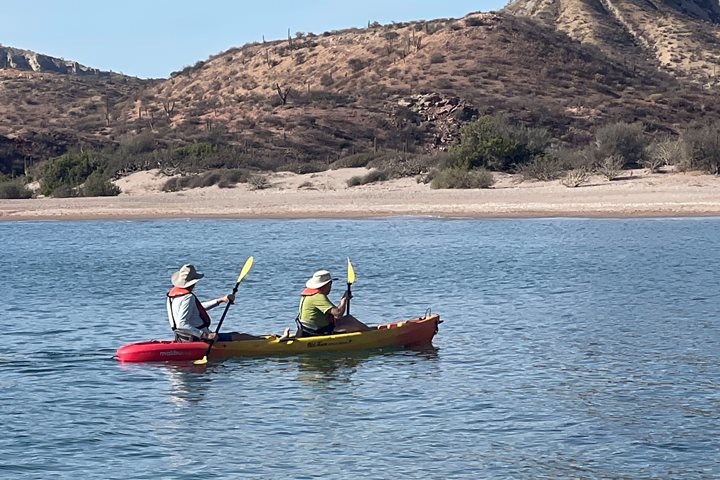An exhilarating aspect of ship travel is that you can wake up in a completely different place every single day. Our first morning aboard the National Geographic Sea Bird found us between Isla San José and the Baja California Peninsula. A striking collage of silvery grays painted the sky as the sun tried to peek through the dense clouds. Several groups of long-beaked common dolphins approached the ship to ride the bow wave. Dozens of mobula rays drifted around us. These are smaller versions of the better-known manta. We noticed the tips of their pectoral fins protruding above the water as we slipped past. Several leaped clear of the surface and created conspicuous splashes in the process. The ship continued north into open water where unexpected wind and big swells enveloped us. To make the best of this situation, we bee-lined for a sheltered anchorage at Bahía Elephante on Isla Santa Catalina to spend the remainder of the day snorkeling and hiking.
After lunch the inflatable boats whisked snorkelers to an anchored boat for an opportunity to try out their gear and visit the underwater world beneath the giant stone elephant that gives this area its name. Yellow-tailed surgeons, sergeant majors, king angelfish, and the electric-blue immature damsels dappled the scene with color.
This rugged granitic island has never been connected to the peninsula and has been isolated long enough to have a variety of fascinating plants and reptiles that we hoped to discover on our walks. The single-columned giant barrel cactus is found only here and on a few nearby islands. Reddish-brown blossoms of these hardy plants form in a ring near the top of the columns. It was lucky to find some in full flower as we strolled by. One group set off on a longer hike and reached the crest of the island for expansive views from the far side. Some chose to snorkel first and then walk on one of a variety of outings. Numerous lizards darted this way and that, including side-blotched, whiptails, chuckwallas, and desert iguanas. Sharp-eyed individuals located several of the elusive Santa Catalina rattlesnakes, unusual because they have no rattles. It surprised us to see masses of honeybees in dense clusters where they worked on wax combs. Although native to the old world, these bees have become naturalized throughout North America, even on tiny islands like this one.
Eventually we all returned to the ship under perfectly clear skies for a quiet evening. The National Geographic Sea Bird left its anchorage and headed north towards another day of adventure.







